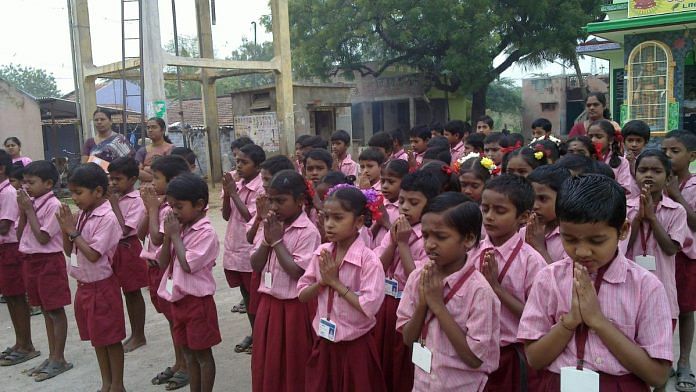Sir, I move: That in Clause 16 the following new paragraph be added as an explanation— “All religious education given in educational institutions receiving Statewide will be in the nature of the elementary philosophy of comparative religions calculated to broaden the pupils’ mind rather than such as will foster sectarian exclusiveness.”
The object of the clause, Sir, is as the mover of the report has suggested, to prevent the students attending these schools being forced to attend the religious classes, if they do not wish to do so. With that, I am in perfect agreement. But I know there are a large number of institutions which are run on religious lines and which came into the field of education much before the State came in.
There are in my Province ‘Maktabs’ and ‘Pathasalas’ which perform the function of imparting education to children of school-going age. But we have seen that the religious instructions given there are of such a nature that, instead of broadening the mind of the child, they miseducate the mind and sometimes breed a certain type of fanaticism and religious bigotry as a result of receiving education in these ‘Maktabs’ and ‘Pathasalas.’
It is a controversial point as to whether we should give any aid to denominational schools at all. I do not wish to open that subject at all because there are experts appointed for this purpose and their report is awaited and I am sure after that, the legislature will enter into that subject in fuller detail.
My object in moving the amendment is that the education imparted in these institutions should be restricted or controlled by the Government without any fear of interfering with anybody’s religion.
The curriculum should be in the control of the Government and should be of such a nature that it broadens the mind rather than create an exclusiveness. When we were discussing the Minority Rights Report, we said that our aim should be to form a united nation and we have done away with separate electorate and agreed on fundamental rights and given each the right to follow his own religion.
But I do believe that however secular a State you may wish to build up, unless one member of it appreciates the religion of another member of the State, it would be impossible for us to build up a united India.
Therefore, without interfering with the religion of anybody, the State should be perfectly entitled to see that in the formative age of the child, when he is of the school-going age, the religious instruction is controlled and that the syllabus is of such a nature that the child will develop into a healthy citizen of India capable of appreciating each other’s point of view.
We may be united by political parties, but if we do not appreciate each other’s religion, we shall find that instead of having really men of religion in our midst, we shall be breeding a type of exclusiveness which will be most harmful and on that type of mind, I am afraid, the future of the nation cannot be built up. With these few words, Sir, I move my amendment and I hope the House will agree with me and accept it.
This is part of ThePrint’s Great Speeches series. It features speeches and debates that shaped modern India.




Does not the picture used here make it racist ? Why picture of students praying in Convent school or Madrasa shown here ?